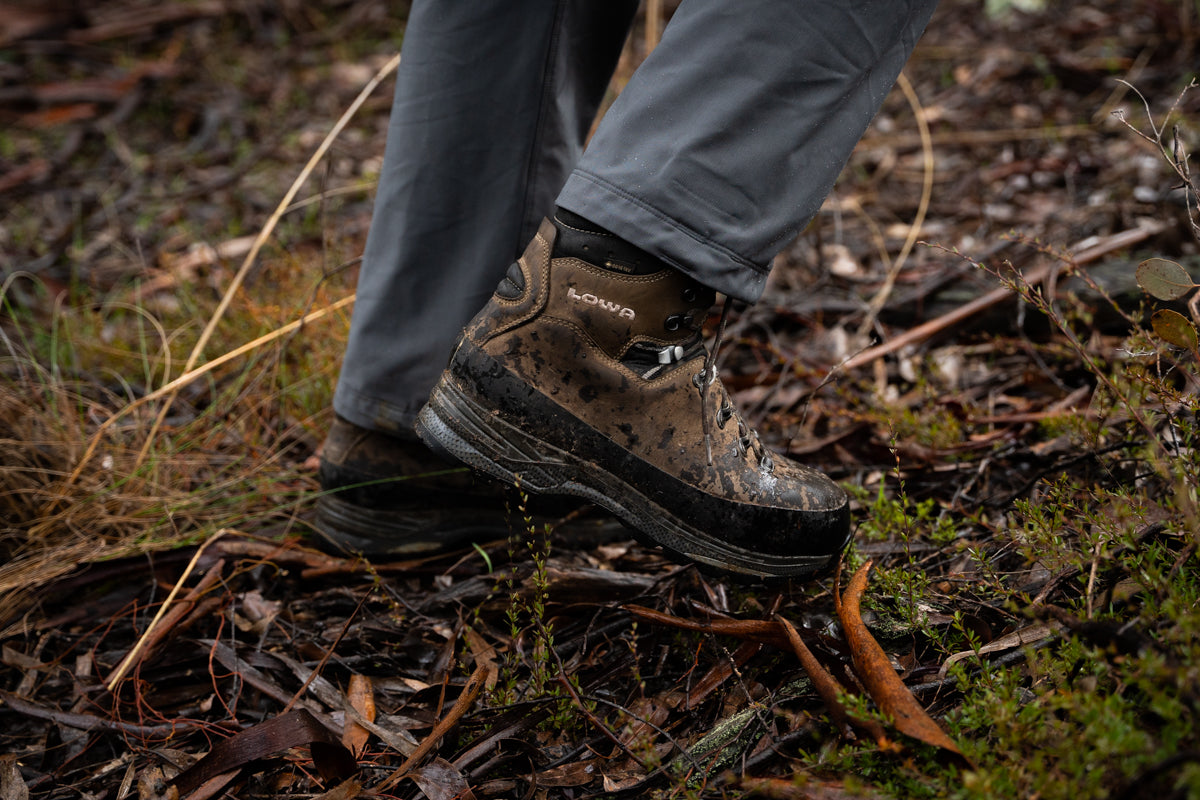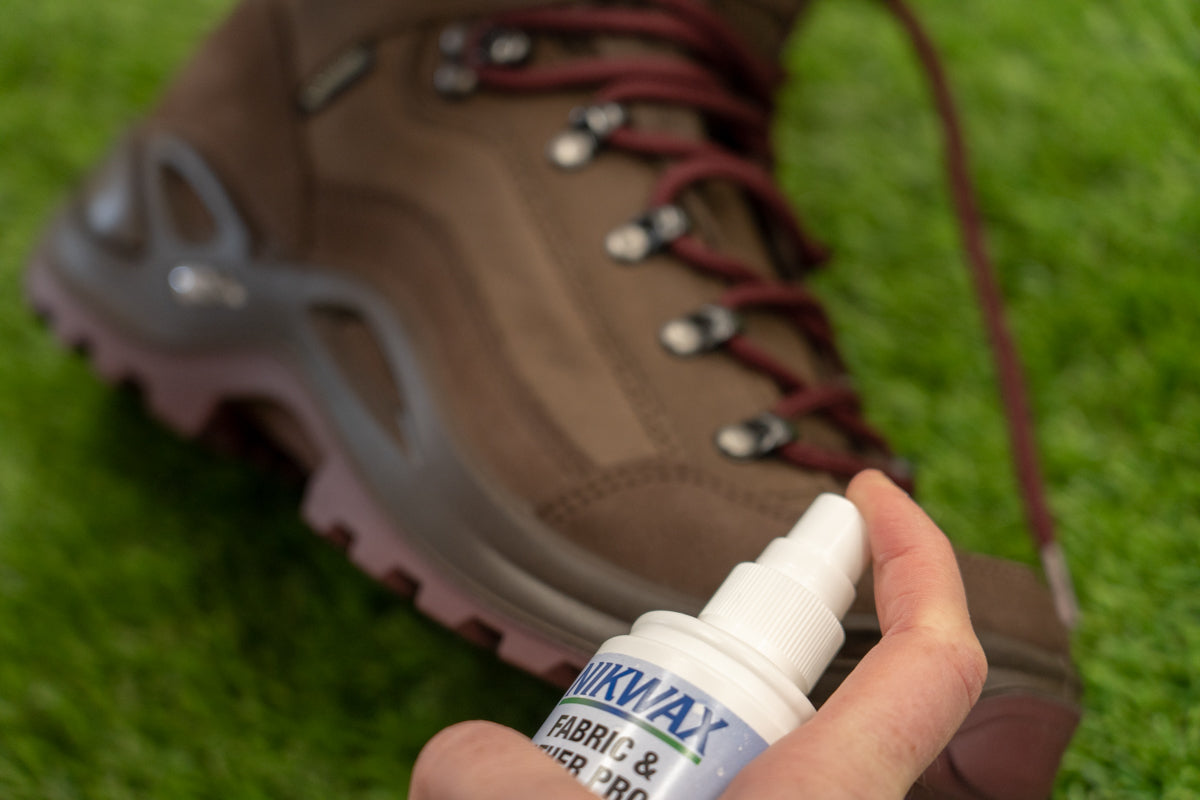
A Guide to Hiking Footwear
Choosing the right footwear is crucial when it comes to hiking. Your shoes or boots serve as the foundation for a comfortable and enjoyable outdoor experience. Investing in high-quality footwear is essential for a safe and enjoyable hiking experience. By following these tips, you'll be well-equipped to find the perfect footwear that suits your needs, provides comfort, and helps you conquer the trails with confidence. And, remember to spend time breaking in your boots with a full pack before you go! Happy hiking!
Types of Hiking Footwear:
Short Ankle Hiking Shoes
Short ankle hiking shoes are similar to a pair of runners. They are light and flexible with very little ankle support, so they may not offer the support needed for multi-day walks. That said, if you prefer your ankles to move freely and don’t like the feeling of lots of support then they are probably ideal for you. If you find yourself more comfortable in something that supports your ankle, a pair of mid-cut or high cut boots may be better suited.
Mid-Cut Hiking Boots
Mid-cut hiking boots offer some ankle support and are generally sturdier than the short ankle variety. They are best suited for a 2-3 day hike with a light backpack. The extra durability, support and grip will be helpful if you are planning a long day walk or on steep and uneven terrain. Mid-cut hiking boots are best suited for those seeking a balance of ankle agility and ankle stability.
High-Cut Hiking Boots
The stiffest, most durable and supportive shoe with support going above the ankle is a high-cut hiking boot. They are best suited for long multi-day hikes carrying a heavy pack. If you prefer lots of ankle stability you may choose to wear hike-cut boots on short multi-days and day walks. The ankle support is also more comfortable and recommended for knee issues. High-cut hiking boots typically have a stiffer outer sole (so your feet don’t wrap around rocks and sticks) and a thicker midsole for cushioning and stability. High cut boots are the most durable, designed to protect from rocks and sticks rough terrain.

Hiking Boots vs Trail Runners
For anything from day walks to thru-hikes with a light pack, a pair of trail runners is a great option. The benefit of trail runners is that they are light and fast-drying, some are even waterproof. However, they aren’t designed to support a heavy pack load as hiking boots are. That’s not to say you can’t wear trail runners on a long multi-day hike. Plenty of ultra-light, experienced hikers go the distance in a pair of lightweight trail runners.
Materials
Boot material effects weight, durability, breathability and what happens when they get wet. So, it’s important to consider what boots are made out of together with the time of year, sections of the track you are walking and the boot style.
Leather
Full-grain: the heaviest but also the most durable material.
Nubuck: resembling soft suede, it’s durable and water-resistant but does take time to break-in.
Split grain: lighter and more breathable than the above, but less waterproof and durable.

Synthetic
Polyester or nylon dries fast, is light and breaks in quickly but doesn’t have impressive durability.
Mesh, used a lot in trail runners as it is light and breathable but not waterproof.
Insulated boots
A necessity if you will be walking in extremely cold or snowy conditions. Not so much if most of your hiking is done in summer or the shoulder seasons. A good pair of socks also go a long way in keeping your feet warm.
Waterproof
Waterproof boots are well worth considering if you are planning on a longer overnight walking trip. They are helpful not only in rainy weather but also on dewy mornings when walking through long grass. Waterproof boots have a lining most commonly made from Gore-Tex and often the upper is also a water-resistant material. Nikwax can also be used to treat leather shoes, improving their water-resistant ability.

The idea of waterproof boots might sound like a no-brainer, but what keeps moisture out also keeps moisture in. Thus, waterproof boots are not as breathable as general hiking boots. So, keep that in mind if you are planning on wearing your boots in warm conditions. Waterproof boots generally work better in cold conditions when your feet are not as likely to perspire.
Other Footwear Considerations
- In summer especially, gaiters are a good idea for protection from grass seeds and blackberries.
- Pack a pair of sandals or crocs for creek crossings and around camp. Plus if your boots happen to get wet or damaged they make a good emergency backup.
- If you have worn your boots for a while and find them uncomfortable you can try some different lacing techniques or insoles to find a better fit.
- A good pair of socks can make all the difference. Make sure your socks fit, are the right height for your boots and have padding in the right places. A pair of socks designed for hiking is your safest bet.
- Adding a thin sock liner can prevent blisters. Allow time before going on a serious hike to break in your boots and find the right sock combination.
Tips for Buying Footwear:
- Don’t be in a hurry, allow time to wander around the store with a pair of boots on for a good 10-20 minutes.
- Shop in the afternoon, as your feet swell as the day goes on. Even better if you’ve spent most of the day on your feet. Your feet may be 1/2-1 sizes bigger after a long day on the trail, especially in warm weather.
- Wear the socks you are going to wear on your trip, or most likely to wear when hiking. Especially if you wear thick socks during winter. And make sure you try them on with any orthotics, cushions or insoles you usually wear.
- One foot may be bigger than the other, always pick shoes based on your bigger foot.
- Do you have wide feet? Choose a brand that allows for this like Lowa.
- Make sure your feet don’t feel squashed in from the sides and that you can wiggle your toes. Your foot should feel secure yet not slide around. Your heel shouldn’t lift and you should be able to slide two fingers down either side of your Achilles tendon when your toes are pushed to the front of the boot.
- If you are purchasing shoes for a long multi-day hike, don’t buy purely on price. Fit and comfort must come first, your trip can be ruined by painful blisters, foot pain from poorly fitting shoes or even having them fall apart while on the trail.
- Consider weight, every kilo on your feet is equivalent to five on your back.
If you have any questions at all, or are not sure what products are best for your hiking kit please do send us an email through our contact form. We also love a chat, so you are more than welcome to give us a call (during business hours) on (02) 6947 4062.

